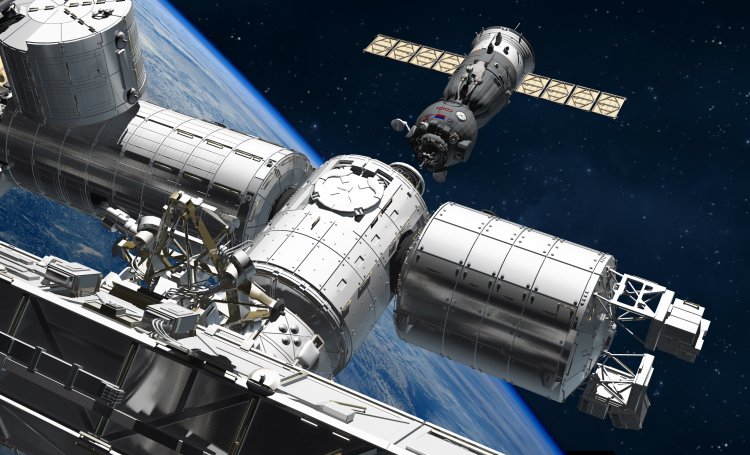International Space Station - A hole was found on the capsule
The Soyuz MS-22 passenger capsule, which is currently attached to the International Space Station, released coolant a few days ago. The location of the leak has been found, the rest is being investigated.

Last week, just before the cosmonauts' planned spacewalk, coolant leaked from the Russian Soyuz capsule, which is now on the International Space Station. The walk was canceled, and an investigation was initiated right away. A first assessment of the capsule by a robotic arm after a few days showed a hole in its exterior section, in the compartment where the instruments are placed.
Yuri Borisov, the first man of the Russian space agency Roscosmos, verified that the ammonia leak last week was caused by a hole with a diameter of 0.8 millimeters. Roscosmos described the scenario as "not very nice," which is an understatement for such a significant problem, or set of difficulties, that such a small hole may produce.
First and foremost, the capsule's cooling mechanism is now malfunctioning, causing it to overheat. It was confirmed for TASS that the warming did not approach 50°C as previously predicted. The crew compartment is now stabilized at a slightly higher than 30°C temperature, while the equipment and instrument section is heated to roughly 40°C. All of this, according to the Russians, is within legal limits for both the cosmonauts and the capsule itself.
The Exp 68 crew worked bone research and cargo operations today ahead of Wednesday's spacewalk. Mission managers also completed a robotic inspection of the Soyuz crew ship leak. https://t.co/LEfc8vH89g — International Space Station (@Space_Station) December 19, 2022
But the Soyuz MS-22 capsule's issues are far from over. The absence of coolant and defects in the cooling system further indicates that the spacecraft may be unfit for return to Earth. Roscosmos has stated that it has no urgent intentions to dispatch a replacement capsule.
However, the Soyuz in this state is far from suitable for any emergency event in which it must swiftly return the crew to Earth. Let us recall that Russians Sergej Prokopiev and Dmitri Petelin, as well as American astronaut Frank Rubio, arrived at the ISS in September of this year and are scheduled to return to Earth in March of next year.
Without a cooler, the Soyuz's multiple systems and flight computer risk overheating during reentry, forcing the crew to "manually" oversee the landing operation. In the coming weeks, NASA and Roscosmos will continue to examine and assess the situation.
The impact of a micrometeoroid, a piece of space dust little larger than a grain of sand that is frequent in orbit, is most likely the origin of the hole in the cooling system.
Post by Bryan C.





























